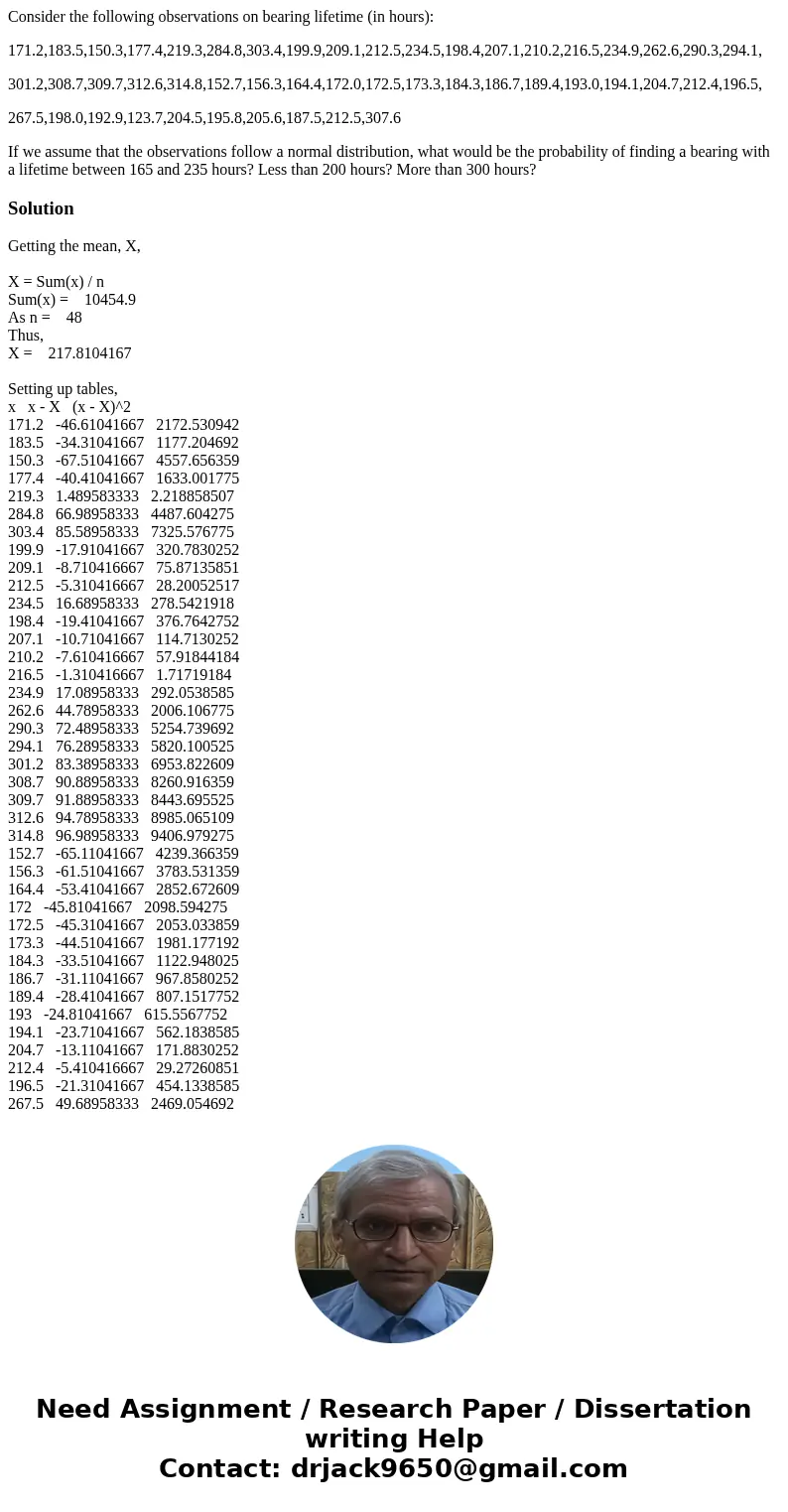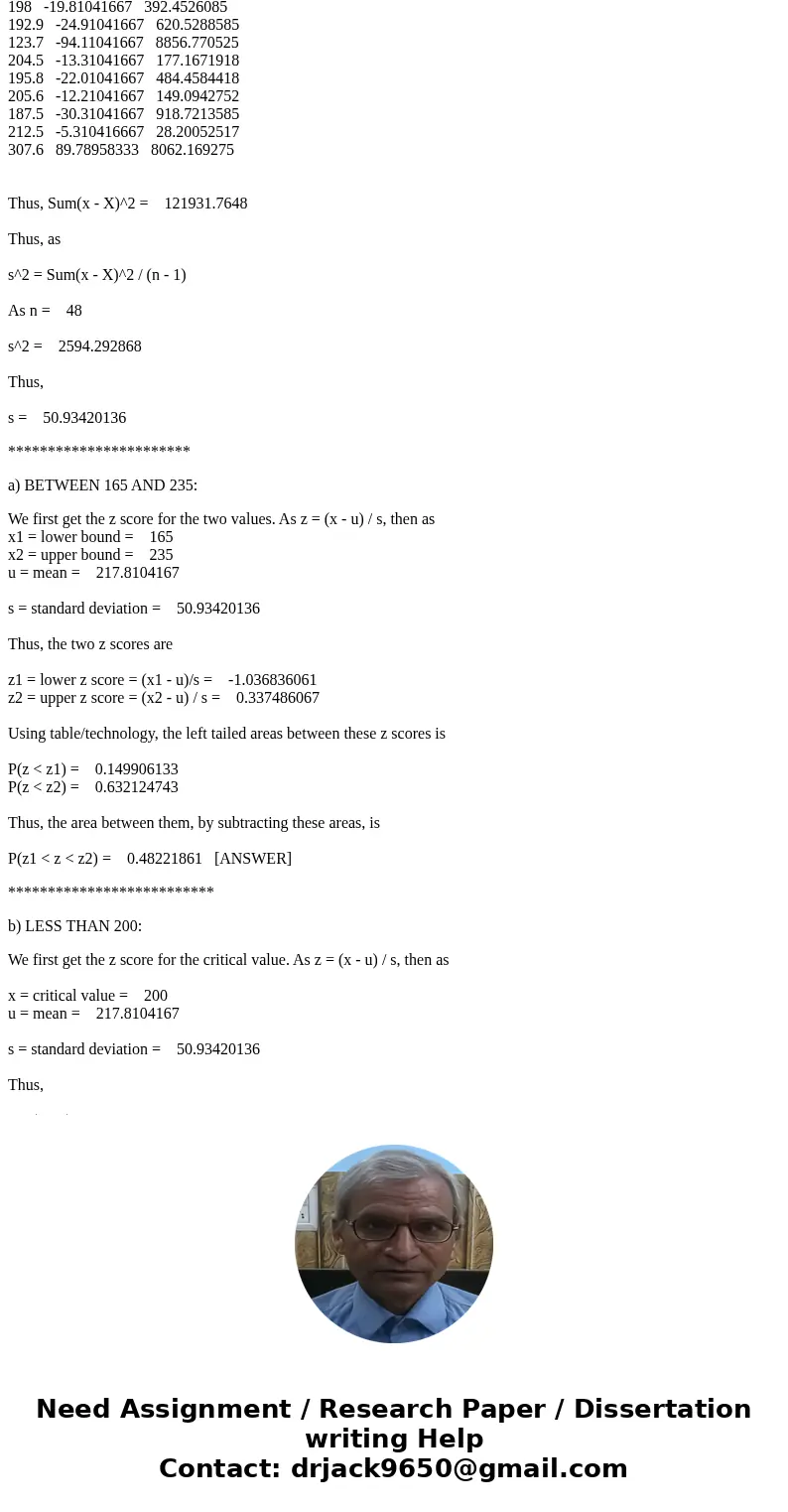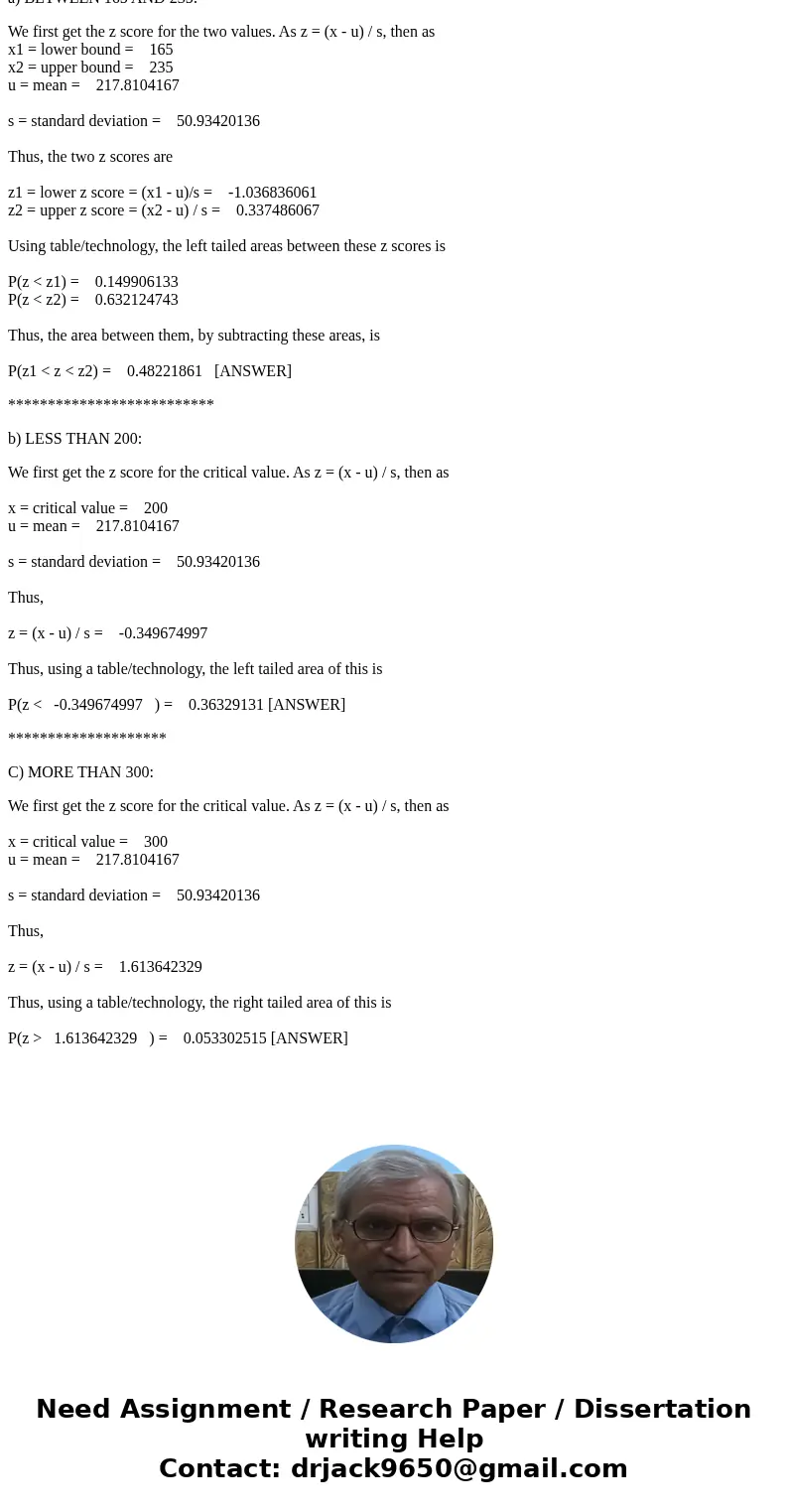Consider the following observations on bearing lifetime in h
Consider the following observations on bearing lifetime (in hours):
171.2,183.5,150.3,177.4,219.3,284.8,303.4,199.9,209.1,212.5,234.5,198.4,207.1,210.2,216.5,234.9,262.6,290.3,294.1,
301.2,308.7,309.7,312.6,314.8,152.7,156.3,164.4,172.0,172.5,173.3,184.3,186.7,189.4,193.0,194.1,204.7,212.4,196.5,
267.5,198.0,192.9,123.7,204.5,195.8,205.6,187.5,212.5,307.6
If we assume that the observations follow a normal distribution, what would be the probability of finding a bearing with a lifetime between 165 and 235 hours? Less than 200 hours? More than 300 hours?
Solution
Getting the mean, X,
X = Sum(x) / n
Sum(x) = 10454.9
As n = 48
Thus,
X = 217.8104167
Setting up tables,
x x - X (x - X)^2
171.2 -46.61041667 2172.530942
183.5 -34.31041667 1177.204692
150.3 -67.51041667 4557.656359
177.4 -40.41041667 1633.001775
219.3 1.489583333 2.218858507
284.8 66.98958333 4487.604275
303.4 85.58958333 7325.576775
199.9 -17.91041667 320.7830252
209.1 -8.710416667 75.87135851
212.5 -5.310416667 28.20052517
234.5 16.68958333 278.5421918
198.4 -19.41041667 376.7642752
207.1 -10.71041667 114.7130252
210.2 -7.610416667 57.91844184
216.5 -1.310416667 1.71719184
234.9 17.08958333 292.0538585
262.6 44.78958333 2006.106775
290.3 72.48958333 5254.739692
294.1 76.28958333 5820.100525
301.2 83.38958333 6953.822609
308.7 90.88958333 8260.916359
309.7 91.88958333 8443.695525
312.6 94.78958333 8985.065109
314.8 96.98958333 9406.979275
152.7 -65.11041667 4239.366359
156.3 -61.51041667 3783.531359
164.4 -53.41041667 2852.672609
172 -45.81041667 2098.594275
172.5 -45.31041667 2053.033859
173.3 -44.51041667 1981.177192
184.3 -33.51041667 1122.948025
186.7 -31.11041667 967.8580252
189.4 -28.41041667 807.1517752
193 -24.81041667 615.5567752
194.1 -23.71041667 562.1838585
204.7 -13.11041667 171.8830252
212.4 -5.410416667 29.27260851
196.5 -21.31041667 454.1338585
267.5 49.68958333 2469.054692
198 -19.81041667 392.4526085
192.9 -24.91041667 620.5288585
123.7 -94.11041667 8856.770525
204.5 -13.31041667 177.1671918
195.8 -22.01041667 484.4584418
205.6 -12.21041667 149.0942752
187.5 -30.31041667 918.7213585
212.5 -5.310416667 28.20052517
307.6 89.78958333 8062.169275
Thus, Sum(x - X)^2 = 121931.7648
Thus, as
s^2 = Sum(x - X)^2 / (n - 1)
As n = 48
s^2 = 2594.292868
Thus,
s = 50.93420136
***********************
a) BETWEEN 165 AND 235:
We first get the z score for the two values. As z = (x - u) / s, then as
x1 = lower bound = 165
x2 = upper bound = 235
u = mean = 217.8104167
s = standard deviation = 50.93420136
Thus, the two z scores are
z1 = lower z score = (x1 - u)/s = -1.036836061
z2 = upper z score = (x2 - u) / s = 0.337486067
Using table/technology, the left tailed areas between these z scores is
P(z < z1) = 0.149906133
P(z < z2) = 0.632124743
Thus, the area between them, by subtracting these areas, is
P(z1 < z < z2) = 0.48221861 [ANSWER]
**************************
b) LESS THAN 200:
We first get the z score for the critical value. As z = (x - u) / s, then as
x = critical value = 200
u = mean = 217.8104167
s = standard deviation = 50.93420136
Thus,
z = (x - u) / s = -0.349674997
Thus, using a table/technology, the left tailed area of this is
P(z < -0.349674997 ) = 0.36329131 [ANSWER]
********************
C) MORE THAN 300:
We first get the z score for the critical value. As z = (x - u) / s, then as
x = critical value = 300
u = mean = 217.8104167
s = standard deviation = 50.93420136
Thus,
z = (x - u) / s = 1.613642329
Thus, using a table/technology, the right tailed area of this is
P(z > 1.613642329 ) = 0.053302515 [ANSWER]



 Homework Sourse
Homework Sourse